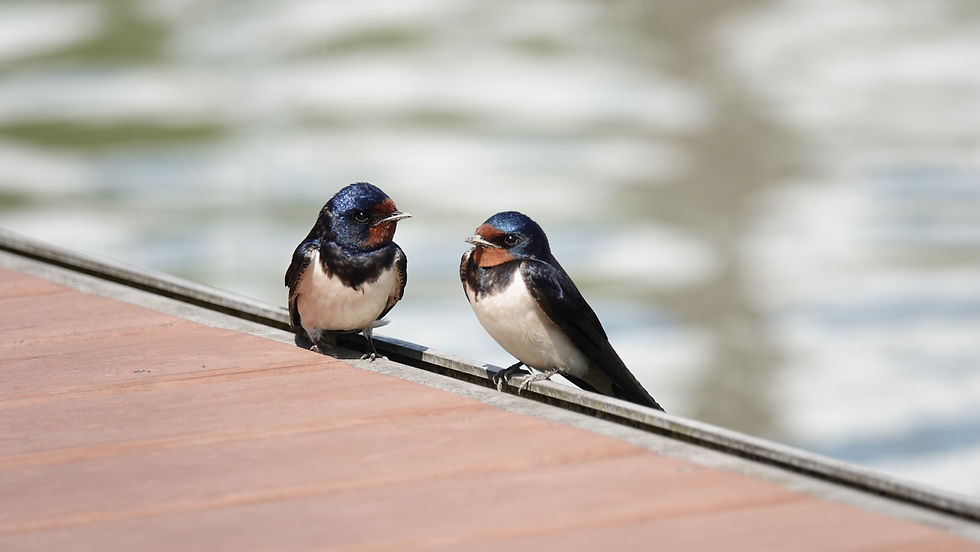With over 150 types of biting midge in the UK and 37 of those species being found in Scotland, Bog Myrtle is definitely something you should know about.
First up, for those who have never encountered the Highland Midge (lucky you!), i'll start by explaining why a tiny fly that is, on average, 1.5mm wide, can reduce grown adults to tears and even supposedly made Queen Victoria abandon a picnic at Balmoral!

They may be small, but there is no denying that they are mighty. In one study, it was claimed that up to 20% of forestry working days can be lost due to the impact of these 'mighty midgies'. It is also estimated that they cost the Scottish tourist industry around £268 million a year in lost revenue too.
The Highland Midge, typically referred to as a 'midgie' is also known as Culicoides Impunctatus and they are typically found in the North and West of Scotland, but they can also be found in other parts of the UK, albeit in lower numbers.
Midgie season is typically from May until about September but it is the arrival of the female midges in late May and early June that signals the true start of their season. Females only bite because they need blood to lay their eggs.
To feed on our blood (if you are squeamish, best turn away now!) they first have to cut our skin - they do this by using their sharp teeth and jaws in a sawing motion before excreting a saliva into the wound to prevent the blood from clotting. When a small pool of blood forms, they can feed for between 3 and 4 minutes before becoming fully engorged.
Midges tend to be found in places with plenty of damp, boggy soil which are perfect as breeding grounds where they typically bury their larvae underground. They can also be found in and around bodies of still water such as Lochs or calm river pools. Even paddling pools and forgotten buckets of water can attract them! They also favour places which are sheltered with high rainfall and high humidity.

Because of their tiny size, midgies are typically inactive if the wind is above 7mph but a sunny and dry day can slow them down too.
The midge prefers to be active in the early morning and late evenings - which is typically just as you decide to sit outside to relax after a long day exploring the Scottish countryside!
They can be so bothersome, that did you know that there is actually a 'midge forecast'? Created and operated by Smidge, the creators of a midge/insect repellent of the same name, this useful tool can help you plan your trips around Scotland to avoid the worst of the midgie season.
Midgies may be a menace to humans, but they are an important part of Scottish bio-diversity and are a staple part of the diet of native bats, swallows and spiders. Midge larvae is also eaten by a range of fish, water beetles and dragon fly larvae (to name just a few)

They are attracted to the Carbon Dioxide that we breathe out but it is thought that 1 in 7 of us might be naturally repellent to midges. Studies have been carried out that suggest our natural body odour plays a role in how 'tasty' we smell to a midge, but there is no conclusive evidence (yet) to suggest what might make you naturally midge repellent. This is where natural repellents come in handy.
There are a number of things which claim they can effectively repel the fierce Highland Midge, including Smidge insect repellent, Avon's skin so soft and Citronella oil which can be found in an array of products from candles to creams, but have you ever heard of Bog Myrtle? No? Neither had we until recently.
Due to it's anti-bacterial properties, it is reputedly known as Scotland's very own Tea Tree, but it is also a known insect and midge repellent. It is also sometimes referred to by it's folk name 'Sweet Gale' due to it's sweet scent.
It grows in acidic soil, still waters such as the shores of Lochs or calm streams and bogland in much the same conditions as the midge itself prefers.
It is a versatile plant surrounded in folklore. According to ancient tales it was once believed that Bog Myrtle could ward off mischievous fairy folk. It is said that the ancient highlanders used to carry Bog Myrtle behind their ears and place sprigs under their beds to help keep the pesky midgies and other insects at bay. It was also a common ingredient in traditional cookery and can even be used as a wool dye. The Vikings even reputedly went to war on it!

These days, Bog Myrtle is no longer needed to ward of the fairies and is certainly much more accessible than it once was. It can now be found in an array of soaps, creams, lotions and topical treatments. Some products are used for their antiseptic properties and others for their insect repellent and anti-midgie qualities.

So next time you plan on heading around the North or West Coast of Scotland (or indeed anywhere that is plagued by the fearsome midge), Given it's ancient history as a midge repellent, it may well be worth considering giving products containing bog myrtle a try.
(Important note, while the plant has been used in various ways for centuries, including food, drinks and topical ointments, it should be noted that the plant has abortifacient properties so should never be ingested by pregnant women. The highly fragrant essential oil from the seeds is highly toxic and should never be ingested; it can also cause skin irritation - so unless you know what you are doing, don't be tempted to make your own - it is best to stick to commercially made products)



Commentaires